Guide to Choosing the Best Screen Protector for iPad Pro 11
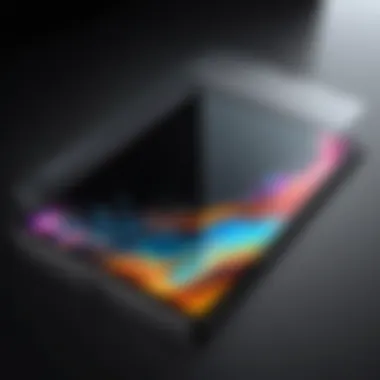
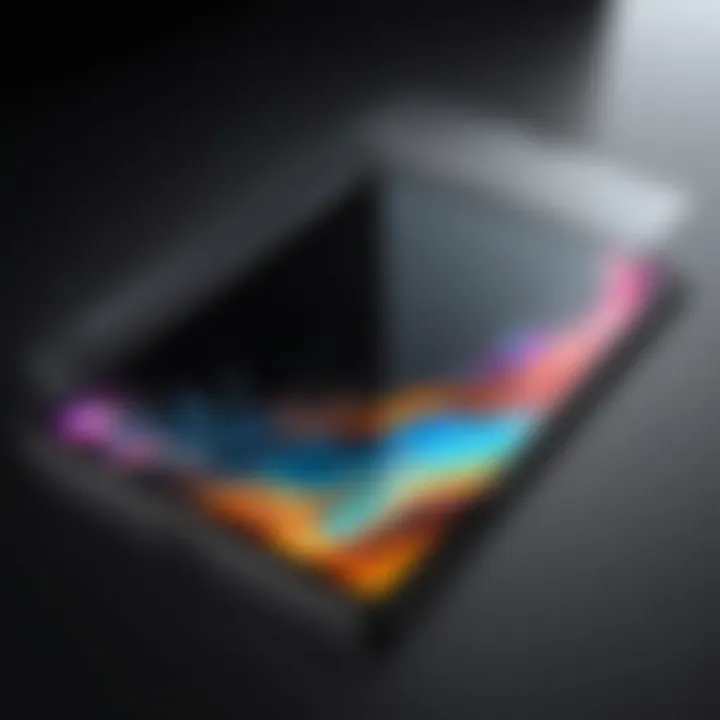
Intro
Overview of the Technology
Key Specifications
The iPad Pro 11 inch boasts outstanding features, such as its Liquid Retina display, which is not just visually stunning but also susceptible to scratches and smudges. With a resolution of 2388 x 1668 pixels, it offers precision and clarity that navigational habits can quickly taint. Therefore, a high-quality screen protector becomes a necessity rather than an accessory.
Unique Selling Points
When looking for a screen protector, it's essential to consider materials and functionality. Some significant factors include:
- Clarity and Transparency: Maintaining the true colors of the display without distortion.
- Touch Sensitivity: Ensuring that swiping, tapping, and gestures remain responsive.
- Anti-Fingerprint Coating: Reducing smudges and making cleaning easier.
Design and Build Quality
Material Used
The market offers several types of screen protectors, including tempered glass and plastic film. While tempered glass has become the go-to choice for many due to its durability and protective abilities, the sleekness and lightness of plastic film present an appealing alternative for those who value a thinner profile. Each type has its own pros and cons:
- Tempered Glass:
- Plastic Film:
- Offers superior protection against impact.
- Typically more resistant to scratches.
- Provides a more premium feel.
- Lighter and less obtrusive.
- Easier to install without bubbles.
- Often lower cost but less protective.
Ergonomics and Usability
When it comes to usability, consider how a screen protector feels during regular use. A quality screen protector should feel seamless, with touch responses remaining fluid and natural. Look for options that mention high touch sensitivity to keep your device engaging as it should be.
"A good screen protector not only safeguards your device but also enhances the user experience. The right choice should feel like a second skin."
In sum, this initial overview paints a picture of what makes a screen protector vital for iPad Pro enthusiasts. Each layer detailed here serves to highlight the intricate relationship between technology, aesthetics, and protection that any tech-savvy individual must navigate thoughtfully.
Understanding Screen Protectors
What is a Screen Protector?
A screen protector is a thin layer applied over the touchscreen of a device like the iPad Pro. Different types offer varying levels of protection and functionality. In general, you'll find three main types: tempered glass, film, and liquid. When installed correctly, they provide an added buffer between your device and the outside world. A good quality protector won't just cover your screen, it will also maintain touch sensitivity and clarity.
For example, tempered glass protectors, made from jagged layers of glass, can withstand a fair bit of force. Film protectors are known for their flexibility but may not be as robust. Lastly, liquid screen protectors involve nano-technology, creating an invisible shield over your device.
Importance of Screen Protection
The importance of screen protection goes beyond mere aesthetics. A damaged screen could lead to costly repairs or replacements.
"An ounce of prevention is worth a pound of cure." This saying rings especially true in the realm of gadgets. A quality screen protector safeguards your investment against:
- Scratches and Scuffs: Everyday objects like keys can wreak havoc if your iPad shares space with these items in a bag.
- Cracks: A sudden slip can lead to hairline fractures that may worsen over time.
- Resale Value: If you ever decide to sell your iPad, a pristine screen can significantly increase its resale value.
Moreover, using a screen protector can enhance usability. Some protectors come with anti-glare features, making it easier to see the screen in bright environments. If you're an artist using the Apple Pencil, a textured glass protector can mimic the feel of traditional paper. This can be crucial for maintaining the integrity of your creative process.
To summarize, understanding the importance of screen protectors is fundamental in selecting the right one for your iPad Pro. Investing a few extra dollars in a reliable protector can prevent headaches and save you money in the long run.
Types of Screen Protectors
Tempered Glass Protectors
Tempered glass protectors are the heavyweight champions of the screen protection world. They’re made from a specially treated glass that can absorb shocks effectively and resist scratches. This type is favored for a reason: it balances durability with clarity, allowing for a near-authentic touchscreen experience. No one wants to compromise on touch sensitivity or overall usability, and tempered glass does a commendable job of retaining those qualities.
Features and Benefits
One of the main benefits of tempered glass protectors is their robustness. They can take a beating, protecting against drops that could potentially shatter the device's original screen. Another notable feature is their easy installation. Most come with an adhesive backing that makes them straightforward to place correctly without bubbles. Also, tempered glass tends to have a high transparency level. You won’t notice a significant drop in display quality; the colors remain vibrant, and the clarity is impressive.
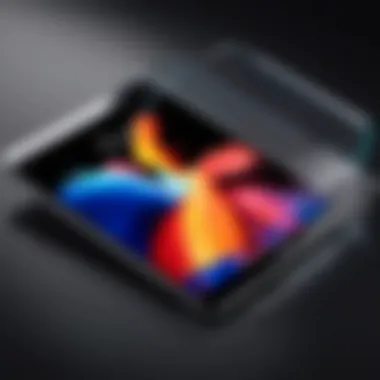
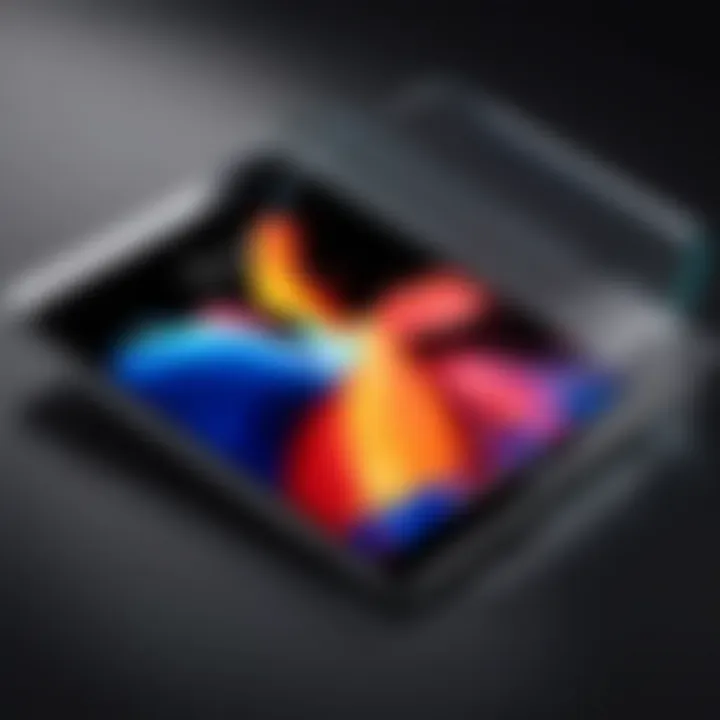
Drawbacks
However, tempered glass isn't without its downsides. The most glaring drawback is the added weight and thickness. If you're someone who prefers slimline designs, a tempered glass protector might feel less sleek. Furthermore, although they’re effective against scratches, they can shatter upon hard impact, potentially leaving you with a cracked protector that requires swapping out. Fixing that can feel like a hassle, especially if you have to deal with replacements often.
Best Uses
So, when should you opt for a tempered glass protector? They are best suited for those who are rough on their devices—think construction professionals or parents with young kids. If your lifestyle leans towards the unpredictable, a tempered glass protector offers peace of mind. It's a solid investment if you plan to travel a lot or just want that extra assurance against accidental drops.
Film Protectors
On the flip side, we have film protectors, which offer a different kind of protection. These are typically made from a thin, flexible material that clings to the screen, providing a barrier against scratches and minor impacts. If you're looking for something that feels lighter, this might be your go-to option.
Features and Benefits
Film protectors are incredibly thin and nearly invisible once applied, making them a popular choice for those who prioritize aesthetic appeal. They often cost less than tempered glass options, so if your budget is tight, this might fit the bill. Many film protectors also offer anti-glare properties, making them useful for outdoor settings where bright sunlight could interfere with visibility.
Drawbacks
On the downside, film protectors don’t typically provide the same level of impact protection as their glass counterparts. They can be prone to scratches themselves over time, which means you might find yourself replacing them more often than you'd like. Also, if you're used to the rigidity of glass, the flexibility of a film can feel strange and sometimes less responsive, especially during heavy use.
Best Uses
Film protectors are particularly suitable for people who want a light and barely-there feel on their screens. They’re ideal for those who mostly keep their devices in a protective case and don’t expose their iPads to many risky situations. Users who favor a sleek look without much bulk added to their device will find these quite appealing.
Liquid Screen Protectors
Lastly, there are liquid screen protectors, a less conventional option that has gained traction in the market. These products involve applying a liquid solution to the screen that chemically bonds to the device, providing a protective layer.
Features and Benefits
Liquid protectors stand out due to their invisible nature. Once applied, they don't add any thickness or weight to your device, which can be a key selling point for many users. They also tend to offer self-healing properties, meaning that minor scratches may disappear over time, which is quite handy. Moreover, liquid protectors generally make the screen more resistant to fingerprints, which can keep your device looking cleaner longer.
Drawbacks
However, they do have some significant drawbacks. For starters, liquid protectors may not provide the same level of impact resistance as glass, meaning a drop could still result in cracked hardware. Additionally, the application process can be a bit tricky compared to peel-and-stick options. You need to ensure proper coverage and wait for the solution to cure fully, which may not appeal to everyone.
Best Uses
Liquid screen protectors are best for individuals who value a lightweight feel and are meticulous about keeping their devices pristine. If you often keep your iPad indoors and don’t partake in extreme activities, this might suit you well. They’re also great for those who own multiple screens, as the liquid can coat several devices and adapt to their shapes more easily.
Each type of screen protector offers its own unique advantages and disadvantages, making it crucial to evaluate what you need based on your lifestyle and usage habits.
Material Comparisons
When it comes to selecting a screen protector for your iPad Pro 11 inch, understanding the differences in material is crucial. The type of material not only influences how well your device is protected but also affects the user experience overall. These variations can make a world of difference when you think about daily usage—whether it’s handling constant swipes, avoiding scratches or keeping fingerprints at bay. Let’s delve into some of the key aspects of screen protector materials, which will undoubtedly help you make a more informed choice.
Scratch Resistance
Scratch resistance is a term that gets thrown around a lot, but what does it really mean for your device? Depending on the material your screen protector is made from, it can greatly determine its ability to withstand the inevitable knicks and scuffs that come from everyday life.
For instance, tempered glass protectors typically offer superior scratch resistance compared to plastic film protectors. Tempered glass is made by heating and then rapidly cooling the glass, leading to a tougher and more durable material. This makes them highly resistant to scratches from common objects like keys or coins. On the flip side, film protectors often provide minimal scratch defense together compared to glass.
While no screen protector is entirely scratch-proof, investing in a higher-quality material can significantly reduce risk. If you tend to keep your iPad in a crowded bag or constantly juggle it between work and leisure, opting for a scratch-resistant protector might save you damages down the line.
Impact Protection
Impact protection is another critical aspect that can’t be overlooked. This refers to how well the screen protector absorbs shocks from drops or bumps. A well-engineered tempered glass protector will usually handle impacts far better than its film counterparts. When a glass protector receives a forceful hit, it spreads the impact across its surface, which can help to prevent the actual screen from shattering.
However, it’s also worth noting that even the thickest glass protectors can shatter if dropped from a height. Therefore, while impact protection is essential, it should be a part of a broader strategy for safeguarding your iPad.
Consider this: If you often use your iPad on the go and you have a penchant for a little clumsiness, choosing a screen protector that touts robust impact resistance could make a big difference in extending the life of your device.
Fingerprint Resistance
Lastly, fingerprint resistance is often an overlooked feature but essential for a clear and smooth user experience. Most tempered glass protectors come with an oleophobic coating that helps to reduce marks and smudges resulting from fingers.
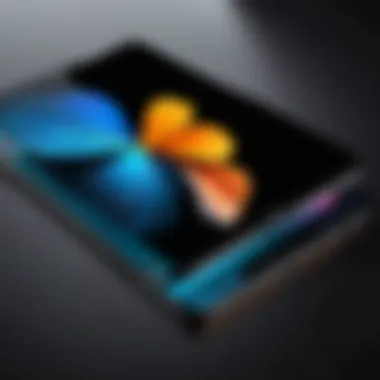
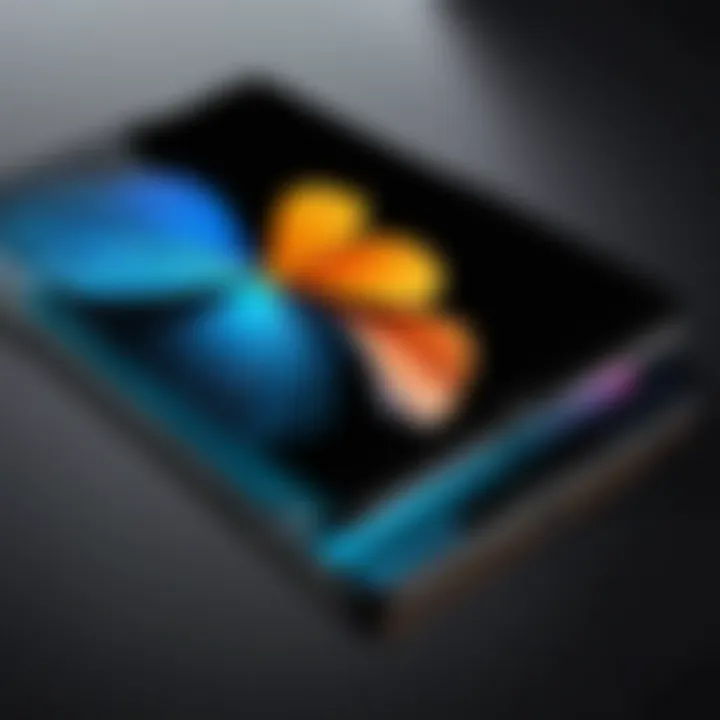
Film protectors don’t typically have this feature, making it necessary to wipe the screen more frequently to maintain clarity. A screen that is continually smudged can lead to a frustrating experience, taking away from the iPad Pro's sharp display quality.
In summary, when evaluating materials, you’ll want to weigh the pros and cons of each type based on how you use your iPad. When purchasing a protector, keep an eye out for those with strong scratch and impact resistance, as well as good fingerprint resistance.
"A good screen protector not only shields your device but also enhances your everyday use, making it a worthy investment."
Ultimately, finding the right material is a balance between protection and functionality.
Evaluating Key Features
When it comes to selecting the ideal screen protector for your iPad Pro 11 inch, understanding the key features is paramount. This stage not only ensures that you’re aware of the various functionalities a protector can offer but also helps you determine which aspects are essential for your usage pattern. Each feature has its own significance, and knowing how they align with your needs can save you time and effort.
Clarity and Transparency
One of the top aspects you should consider is clarity. After all, no one wants to dull down the brilliant colors and sharp details the iPad Pro is known for. A clear protector allows you to not only see your screen as intended but also enjoy activities like watching videos or gaming without any hindrance. The best screen protectors have a high transparency rating, meaning they maintain the natural look and feel of your device's display.
To assess transparency, look for terms such as "HD clarity" or suitable metrics specified by the manufacturer. A good rule of thumb is that you should barely even notice the protector once it's applied. Balancing a protective layer with uncompromised visual performance is a fine line, but essential for enjoying your iPad Pro to the fullest.
Ease of Installation
Let’s face it, no one wants to wrestle with a flimsy instruction manual or deal with a stubborn protector that refuses to align. Installation should be as smooth as butter. Many newer products come with alignment tools or adhesive applications that eliminate the guesswork, making it a breeze to install. If the screen protector claims to be easy to install, but your experience says otherwise, that’s a red flag.
Not only should the installation process be user-friendly, but it should also minimize the risk of dust and air bubbles. For added convenience, some brands even offer video tutorials or customer support lines to assist you.
Touch Sensitivity
Lastly, we have touch sensitivity—a feature that may seem secondary but is crucial for a seamless user experience. A screen protector's tactile response impacts daily interactions, especially for those who use the iPad Pro for drawing or gaming.
If the protector is too thick or has a poor design, you might find that your usual swipes and taps feel sluggish or unresponsive. Prior to making a purchase, it’s wise to read user reviews specifically mentioning touch sensitivity. Many reputable brands conduct various tests to ensure that their protectors won’t interfere with the responsiveness of the original screen, so keep an eye out for such endorsements.
"A protective layer shouldn't turn your iPad Pro into a clunky device; it's there to enhance your experience, not hinder it."
By evaluating these key features—clarity and transparency, ease of installation, and touch sensitivity—you can make a more informed decision when choosing your screen protector. Take the time to weigh these aspects, as they can significantly impact how effectively your screen protection meets your needs.
Installation Techniques
Installing a screen protector properly can be the difference between a flawless experience and an annoying one. Many users underestimate the importance of installation techniques, thinking any slap-on approach will suffice. In reality, a well-installed screen protector not only provides better protection but also spares users from common frustrations such as bubbling, misalignment, and dirt getting trapped underneath.
Preparing the Surface
Cleanliness is key. Before applying your screen protector, you must ensure that the surface of your iPad Pro is spotless. Dust, fingerprints, and oils from your fingers can cause issues down the line. Start by using a microfiber cloth to wipe the screen gently. If available, a specialized electronic cleaner can work wonders in removing stubborn grime.
You might also want to use an alcohol wipe for deeper cleaning. After that, it’s beneficial to blow off any loose dust particles, or even use a tape method—take a piece of adhesive tape and dab it around your device's screen to lift away any small bits of dirt that might linger.
The goal is to create a pristine canvas for your screen protector. Take your time; a few extra moments of prep work can save you a lot of headaches later.
Applying the Protector
When you begin to apply the protector, make sure you do it in a dust-free environment if possible. Some people recommend doing this in the bathroom after a hot shower, as the steam helps trap dust particles and make them less likely to float around.
- Align it carefully: Before you peel off the adhesive backing, line up the protector with the edges of your device. This step requires precision. If you’ve got alignment guides, use them.
- Go slow: Slowly peel back the covering of the protector. Do not rush this step. As you’re placing it down, use a card or your finger to gently push it down from one side to the other, allowing it to adhere smoothly without trapping air underneath.
It is often said that this is where people either succeed or fail. It's a delicate operation, but doing it right makes all the difference. The protector should lay evenly flat without any creases or obstacles underneath.
Dealing with Bubbles
Bubbles are one of the biggest complaints you hear from people who install screen protectors. If you find yourself in this dreaded situation, don’t panic. Here’s how to calmly wrangle those pesky invaders:
- Push gently: Use a credit card wrapped in a microfiber cloth to push the bubbles towards the edges. You want to squeeze them out without causing too much stress on the protector itself.
- Give it time: Sometimes, leaving the device undisturbed for a while can help the bubbles dissipate. They might vanish on their own after 24 hours as the adhesive settles.
- Use a pin (carefully): If a bubble refuses to budge, a tiny pin can be utilized to poke a small hole. This allows trapped air to escape, but you’ve got to keep it to a minimum. If you go this route, be super cautious—minimal damage is your goal, not creating a larger problem.
In summary, ensuring a successful installation not only provides durable protection but enhances your overall user experience. Taking each step seriously might feel tedious, but in the world of device care, such diligence pays off tremendously.
Maintenance and Care
Maintaining your screen protector is just as crucial as choosing the right one. Proper care and regular maintenance not only enhance the lifespan of your screen protector but also ensure that your iPad Pro 11 inch remains in excellent condition. A well-maintained screen protector can offer optimal protection against scratches, smudges, and other forms of damage, thus preserving the clarity and touch sensitivity of your device.
Keeping your screen protector clean can improve your viewing experience; a dirty screen can make it hard to see what you're doing and could affect the responsiveness of your touchscreen.
Cleaning Techniques
Regularly cleaning your screen protector is vital. Here are some effective cleaning methods:
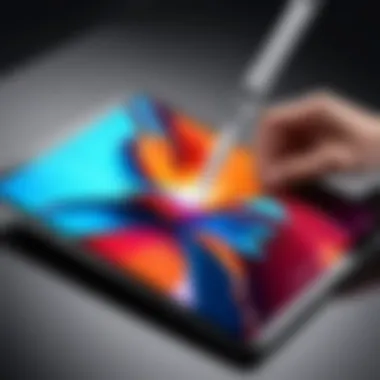
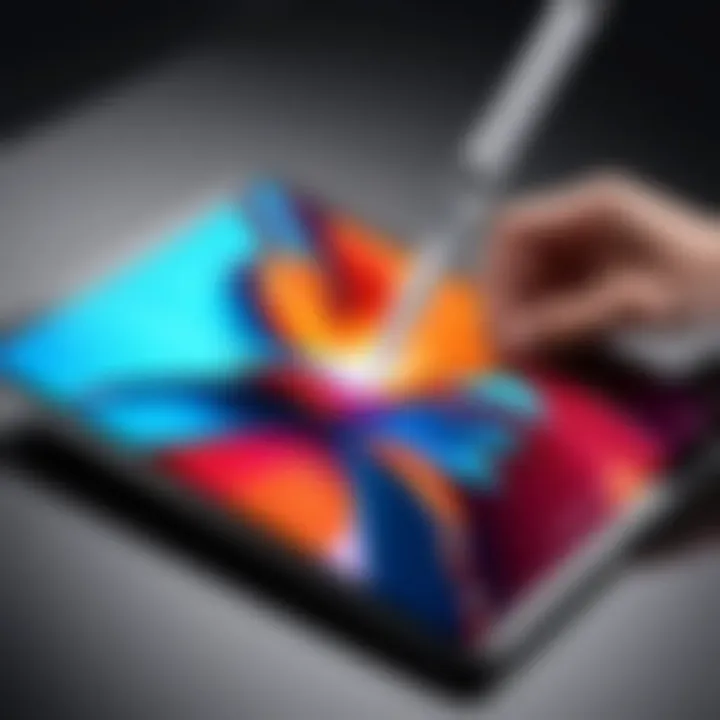
- Microfiber Cloth: Always use a soft microfiber cloth specifically designed for screens. Traditional cloth can scratch the surface.
- Gentle Cleaning Solution: Mix equal parts of distilled water and white vinegar, or use a screen-friendly cleaning solution. Avoid alcohol-based solutions as they can strip layers off some protectors.
- Wipe Technique: Gently wipe the surface in circular motions, paying special attention to smudged or dirty areas. Avoid pressing too hard, as that might cause damage.
- Drying: Allow it to air-dry after cleaning, or use another microfiber cloth to buff it gently.
By adopting these cleaning practices, you can ensure that your screen protector—as well as the screen underneath—is functioning at its best.
Longevity Tips
To extend the life of your screen protector, consider the following tips:
- Store Properly: When you're not using your iPad, store it in a protective case. It keeps dust and debris from settling on the screen protector.
- Avoid Excessive Heat: High temperatures can weaken adhesives or distort the protector. Keep your device away from extreme heat sources.
- Limit Exposure to Oils: If you frequently use your devices with greasy hands or while eating, it’s good practice to clean the screen regularly. Residues from fingers can accumulate, leading to a dull appearance.
- Check for Damage: Regularly assess the screen protector for chips or scratches. If any damage is found, promptly replacing it can prevent further issues down the line.
Maintaining your screen protector doesn't have to be a chore. With these simple cleaning techniques and longevity tips, you ensure your iPad Pro 11 inch stays in great shape. This will not only improve your user experience but will also keep your device looking sharp.
Top Recommendations
When it comes to securing your iPad Pro 11 inch, selecting the right screen protector is paramount. This section demystifies some top recommendations, aiming to illuminate your path toward the best choices. Each recommendation is based on features, user reviews, and the reliability of performance in the long run. You want your iPad Pro protected not only from everyday mishaps but also from wear and tear.
Understanding the nuances of various protectors can help you navigate the crowded market. Whether you are a daily user or an occasional one, there’s something here that matches your needs. After all, the screen is often the window to your digital experiences. Protect it wisely.
Best Overall Screen Protector
In the vast sea of screen protectors, the amFilm Tempered Glass Screen Protector often sails ahead as a top choice. Why? Well, for starters, it strikes an exceptional balance between durability and clarity. Made from high-grade tempered glass, it can withstand impacts that would leave lesser materials shattered.
- Key Features:
- 9H hardness rating, which means it offers stellar protection against scratches.
- Ultra-clear design ensures that the display remains as vivid as ever.
- Easy installation process with adhesive that prevents a build-up of bubbles.
Buying this screen protector is like putting a fortress around your iPad’s display while retaining the stunning aesthetics of your device.
Budget-Friendly Option
Not everyone needs or wants to splurge on high-end options, and that’s perfectly fine. The JETech Screen Protector provides solid protection without breaking the bank. Voted highly by users for its affordability, this protector delivers decent strength without the bells and whistles.
- Why Choose JETech?
- Fits snugly on the iPad Pro, ensuring no unnecessary weight or bulk.
- Offers good resistance against fingerprints and smudges.
- Comes in a pack of two, giving you a spare for when you need it.
This option proves that sometimes, you don’t need to spend a fortune to get reliable protection. It’s like finding a good deal at a yard sale - you know it’s worth every penny.
Premium Choice
For those who wish to go above and beyond, consider the Zagg InvisibleShield Glass Elite. This protector is not just luxurious, it’s built like a tank. Engineered with a proprietary technology that enhances clarity while providing advanced impact protection, it truly embodies premium quality.
- Notable Features:
- Self-healing properties can reduce minor scratches over time.
- Anti-glare feature is great for outdoor use, allowing clear visibility in bright sunlight.
- Lifetime warranty offers peace of mind; it's a product built to last.
Investing in Zagg is akin to wrapping your iPad Pro in a safety net that doesn’t compromise on style or function. Think of it as the Swiss Army knife of screen protectors - reliable, versatile, and top-notch.
"A screen protector isn’t just an accessory; it’s a necessity. Protecting your device can enhance its resale value and ensure a better user experience overall."
The End
First, a well-suited screen protector guards your display against scratches, accidental drops, and other mishaps that could potentially lead to costly repairs. Furthermore, it can decrease glare and provide a better viewing experience, especially under bright lighting conditions. This way, you don't have to squint at your device while using it in direct sunlight, which is often a challenge for many users.
Key considerations when evaluating screen protectors include the material's durability, how easy it is to install, and its ability to maintain touch sensitivity. These factors help ensure that the protector enhances rather than hinders your user experience.
With all that in mind, taking the time to select an appropriate protector can save you headaches down the line. As the old saying goes, "an ounce of prevention is worth a pound of cure." In the tech world, this rings especially true. Investing in a valuable screen protector can mean the difference between keeping your iPad Pro in mint condition or facing the heartache of a cracked screen.
Summary of Key Points
- Durability Matters: Look for screen protectors that emphasize scratch resistance and impact absorption.
- Ease of Installation: Ensure the installation process is straightforward, or risk bubbles and misalignment.
- Touch Sensitivity: Test to make sure the protector does not hinder the device’s responsiveness.
- Material Choices: Understand the different types—tempered glass, film, and liquid—and assess their advantages and disadvantages.
Overall, with a myriad of options available on the market, having a clear understanding of what features are necessary will guide you in making a well-informed decision.
Final Thoughts on Protection
Investing in a screen protector is not merely a trivial purchase; it’s a protective shield for your device. The iPad Pro 11 inch is a significant investment that deserves just as much care as you'd provide for a luxury item. Consider what you use the device for—whether it's for work, creative endeavors, or simply browsing—and how a screen protector complements those activities.
There’s no one-size-fits-all solution; the right choice will depend on your particular usage patterns and preferences. Whether you choose a glass protector for its high durability or a film set for its sleekness and lightness, weigh the options carefully. The goal is to achieve a balance between functional utility and maintaining the pristine look of your iPad Pro.
In summary, protection is not just an accessory; it’s an essential element of nurturing your device. No one wants to deal with costly repair bills or functional awkwardness, especially from a screen that should enhance their user experience. The right screen protector will ensure that your iPad Pro stands tall against the bumps and bruises of everyday life.







